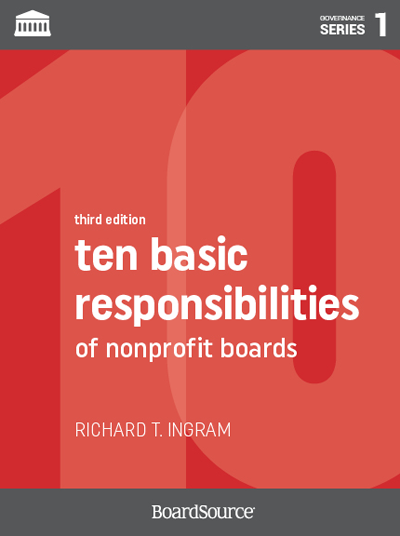Nonprofit Agency: Comprehensive Services to Support Charities and Organizations
Nonprofit Agency: Comprehensive Services to Support Charities and Organizations
Blog Article
The Importance of Partnership and Collaboration for a Nonprofit Firm in Maximizing Resources and Enhancing Area Interaction
In the world of not-for-profit agencies, cooperation and collaboration become essential systems for fostering and amplifying sources neighborhood engagement. By purposefully involving with other organizations, nonprofits can leverage shared knowledge and monetary assistance, thus resolving complicated social challenges much more adeptly. Furthermore, these partnerships not just boost program efficiency yet likewise cultivate a much deeper sense of area participation and possession. Yet, the true possibility of these collective efforts typically stays untapped, questioning regarding exactly how ideal to browse partnerships for optimal impact and sustained success. What variables contribute to the effectiveness of these cooperations?
Advantages of Collaboration

Furthermore, cooperation promotes technology by encouraging the exchange of concepts and best techniques. When organizations collaborate, they can explore diverse viewpoints, leading to innovative remedies that may not emerge in isolation. This shared analytic approach can ultimately enhance service delivery and program outcomes.
Furthermore, collective initiatives can enhance neighborhood interaction. When nonprofits partner with each other, they can activate broader support from stakeholders, consisting of volunteers, contributors, and neighborhood members. This cumulative interaction not just boosts exposure but also enhances the reliability of the taking part companies.
Structure Strategic Collaborations
Cooperation among not-for-profit companies typically results in the development of tactical collaborations, which are essential for making the most of influence and accomplishing shared objectives. These collaborations enable organizations to utilize each other's strengths, improving service distribution and expanding outreach. By aligning goals and purposes, nonprofits can create a collaborating impact that amplifies their reach and effectiveness within the community.
Structure critical collaborations calls for mindful planning and shared understanding. Organizations needs to first recognize possible companions that share similar worths and goals, ensuring compatibility in mission and vision. Establishing open lines of communication fosters depend on, allowing partners to go over expectations, sources, and responsibilities transparently. Joint campaigns and routine meetings can aid preserve energy and address challenges proactively.
Additionally, clearly specified obligations and duties are vital for liability and success. Formalizing the partnership with composed arrangements can provide a framework for partnership, laying out the scope of work, performance metrics, and analysis methods. By fostering these tactical partnerships, not-for-profit agencies can enhance their ability to address neighborhood demands, innovate services, and set in motion sources properly, inevitably bring about an extra significant and lasting influence in the communities they offer.
Sharing Resources Effectively
How can nonprofit agencies maximize their influence via reliable source sharing? By purposefully teaming up visit with various other organizations, nonprofits can enhance their operational effectiveness and prolong their reach within the neighborhood. Source sharing entails pooling numerous possessions, consisting of economic sources, employees, experience, and centers, to resolve usual objectives better.

Additionally, leveraging each various advice other's toughness can cultivate innovation. By exchanging knowledge and best practices, agencies can enhance service shipment and establish brand-new services to neighborhood obstacles. Effective resource sharing likewise grows a feeling of unity, reinforcing the idea that partnership is important for accomplishing significant social influence.
Involving the Neighborhood
What techniques can not-for-profit companies use to properly engage their areas? Utilizing numerous platforms, such as social media, e-newsletters, and neighborhood online forums, enables agencies to share information, get comments, and foster discussion.
Furthermore, forming collaborations with local organizations can enhance outreach initiatives. nonprofit agency. Teaming up with institutions, businesses, and various other nonprofits can magnify resources and create a more comprehensive assistance network, permitting joint initiatives that reverberate with community requirements
Moreover, holding area occasions, workshops, and volunteer opportunities can promote deeper engagement. These tasks create a sense of belonging and urge energetic engagement, allowing people to add to the agency's goals while developing partnerships with fellow area participants.
Measuring Joint Success
Reviewing the efficiency of collective efforts is important for nonprofit firms looking for to maximize their impact. Measuring collaborative success involves developing clear, measurable purposes and making use of a variety of metrics to analyze performance. Secret signs might consist of the variety of collaborations formed, resources shared, and the concrete outcomes attained via collaboration.
To efficiently determine success, nonprofits ought to execute a structure find this that includes both qualitative and measurable data. Studies and meetings can provide insights into stakeholder fulfillment and the perceived value of collaborations. Additionally, tracking metrics such as service reach, area engagement degrees, and economic efficiency can supply a comprehensive sight of collaborative performance.
Routine evaluations must be performed to determine locations of renovation and best methods. This repetitive process not only improves responsibility yet also promotes a society of continual learning within the organization - nonprofit agency. By transparently sharing examination results with companions and stakeholders, nonprofits can strengthen connections and develop depend on
Eventually, gauging joint success enables not-for-profit firms to improve their strategies, assign sources extra efficiently, and strengthen their mission-driven initiatives, resulting in a better cumulative effect on the areas they serve.
Conclusion

In the world of not-for-profit firms, collaboration and collaboration arise as crucial devices for magnifying resources and promoting area interaction - nonprofit agency. By promoting these strategic partnerships, nonprofit firms can improve their capacity to address area requirements, introduce options, and mobilize sources efficiently, inevitably leading to a much more lasting and considerable influence in the neighborhoods they offer
By tactically teaming up with various other organizations, nonprofits can boost their functional efficiency and expand their reach within the neighborhood.What techniques can not-for-profit firms employ to properly engage their communities?Cooperation and partnership stand as necessary pillars for nonprofit firms aiming to make the most of sources and enhance community interaction.
Report this page